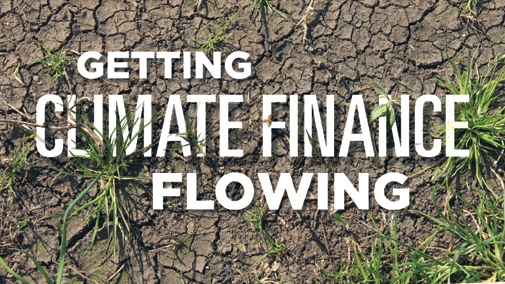News
Climate finance is flowing, but it isn’t enough – yet

Climate change is expensive, and dealing with it will only grow costlier the longer countries, cities, and industries delay reducing greenhouse gas emissions. The good news is that money is flowing to solutions, and a growing number of leaders in government and business are taking action. The challenge is that the volume of finance isn’t enough – yet.
About US$359 billion a year has been flowing within, to, and between countries to finance low-carbon development that can help lower emissions and increase resilience to climate change.
This money is collectively referred to as “climate finance.” The bulk of it – about 62 percent – comes from private investment, largely from project developers. The other third comes from public sector sources, such as development banks and government aid, according to the Climate Policy Initiative’s Landscape of Climate Finance 2013.
Climate finance helps expand access to cleaner energy sources such as wind, solar, and geothermal. It supports development of low-carbon buildings, infrastructure, and transportation, and it helps communities build resilience to climate risks. In countries around the world, it is driving development that communities already need, with the added benefits of building resilience, growing jobs, and reducing the human contributions to climate change.
But while just under US$1 billion a day in climate finance is flowing globally, it is barely half the volume required to equal the climate challenge, particularly for developing countries whose fast-growing cities are making energy and infrastructure decisions today that will set their development course for the future.
Estimates put the actual need for low-carbon development and clean energy investment at over US$700 billion a year and possibly more than US$1 trillion a year.
That level of money is available for investment – the bond market alone is worth US$80 trillion – and innovative public and private sector leaders are finding ways to help investors overcome perceived risks and connect with projects.
Sending the right signals for investment
Investors have an appetite for sustainable, low-carbon projects. In 2013, they put nearly US$250 billion into renewable energy, five times more than in 2004. But the conditions have to be right, and that means a combination of supportive and consistent government policies, targeted public finance, and innovative financing and business models.
Public climate finance can directly support projects and encourage investment by reducing costs and lowering risks. The World Bank Group, for example, is able to offer concessional loans, which are provided at more attractive interest rates, and grants that support projects; purchase projects' carbon credits; and provide guarantees that lower investor risk.
Governments also have the power to catalyze private sector climate finance by sending the right policy signals. They can use policy to help to unlock private sector investment in clean energy and low-carbon growth in a number of ways, including:
-
Putting a price on carbon through market mechanisms or taxes;
-
Removing fossil fuel subsidies;
-
Implementing energy efficiency performance standards; or
-
Creating strong investment frameworks for clean energy.
Morocco, for example, adopted aggressive targets for renewable energy and improvements in energy efficiency (42 percent and 12 percent by 2020, respectively), lowered fossil fuel subsidies, and created an attractive legal framework. As a result, the country is becoming known as a solar power innovation hub, and it saw its renewable energy investment grow from US$297 million in 2012 to US$1.8 billion in 2013. Other emerging markets such as Chile, South Africa, and the Philippines are following policy-driven strategies with similar results.
Almost 40 national and more than 20 subnational governments already have or plan to implement carbon pricing, and 144 countries have renewable energy support policies and targets.
Institutional investors & green bonds
Investors are also beginning to realize that their returns will be undermined by economic and social disruption resulting from climate change – and that climate-smart investments can offer stable, attractive returns.
Institutional investors have been channeling money into socially responsible investments while also encouraging the companies they invest in to shift to sustainable growth and clean energy. Swedish Pension Fund AP4 conducted a portfolio-wide carbon footprint exercise and then developed a climate indexed fund that has outperformed the market. Other investors, such as France’s ERAPF, have begun to systematically screen potential investments for their carbon footprint.
One relatively new and growing source of private climate finance is the green bonds market. The World Bank Group and others began developing green bonds about seven years ago to tap into the bond market to finance environment- and climate-friendly projects. The market has rapidly diversified to include banks, corporations, and governments as issuers and expanded their investor base to include more pension funds, insurance companies, asset managers, and retail investors. This summer, the market exceeded $20 billion for the year and continues to grow.
Green Climate Fund
Within the United Nations climate change negotiations, developed countries have also committed to bolster climate finance to developing countries by providing $100 billion a year by 2020, including through the establishment of a Green Climate Fund. This money has the potential to be catalytic – and mobilize much greater sums of private finance to those countries with attractive policy and investment environments.
Boosting that public finance will add to the work that innovative governments, development banks, climate funds and investors are doing through policy improvements, the green bonds market, investment screening, and innovative public finance.
Leaders across the public and private sectors are building a pathway for climate finance toward the international climate conference in Paris in 2015 to turn the climate challenge into an investment opportunity that supports low-carbon growth and builds resilience.

Source: World Bank




